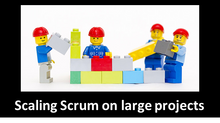What is an Agile Business Case?
- Venki Prathivadi
- Aug 15, 2017
- 2 min read
Firstly, there may be no such thing as an Agile Business Case. There is “Agile” as a vast topic and there is such a thing as a “Business Case”. Secondly, this blog is not about a business case for Agile. It is about creating a compelling business case for your project. That project may be delivered using an Agile approach. Let us simplify the concepts.
Agile is a way of delivering software incrementally, in short fixed-time cycles. This is different to the common way of delivering software at the end of a planned time-period. Agile approaches are not restricted to software alone. They are useful for any product development.
A Business case is a formal, written document that provides reasons for undertaking the project. Its intent is to convince decision makers and stakeholders to approve and provide resources for the project. Compelling business cases define targeted benefits from the project in a credible manner. They project costs and benefits along a timeline. Value is the difference between targeted benefits from the project and its costs.
In our experience, most people who write, read or approve business cases tend to focus more on costs. They tend to gloss over or struggle with benefits. Worse yet, hardly anyone ever refers to the Business Case after approval. We have hardly seen any sincere effort to measure the real benefits after completion of the project. Yet, the same people obsess with cost overruns in the project. Few people understand the concept of Value – defining it in monetary terms and measuring it. We seem to know the cost of everything, but the value of nothing.
The concept of Value is fundamental to the Agile approach. Value manifests itself through prioritization of the increments. In the Agile approach the aim is to deliver value regularly and periodically. A compelling business case ought to arrange the realization of benefits in a smart manner. Project costs are incurred regularly throughout the project. It makes sense for benefits to be realized early and regularly too. Projects should be planned in such a way as to deliver benefits in regular, short cycles rather than at the end. That is the Agile approach.
Recommendations
Spend 80% of your effort, in writing a business case, in thinking through anticipated benefits and arranging them along the timeline. Estimating cost of development using an Agile approach is simpler. Estimate the number of resources in the Iteration and the number of Iterations required and factor in any contingencies. The Agile approach is essentially a fixed schedule (and therefore a fixed cost) and variable scope (based on priority of requirements) approach.
Develop a “Benefits realization plan” as part of the Business Case and execute that plan throughout the project lifecycle.
Use the Business Case timeline, particularly the sequencing of benefits, to drive Backlog grooming and Project Planning (Release and Sprint Planning in the Agile context).
We welcome your comments about this topic or anything else you think is relevant.












































Building an agile business case requires flexibility, continuous adaptation, and alignment with evolving project goals. By integrating iterative planning and stakeholder collaboration, teams can ensure efficiency and responsiveness in agile project management.